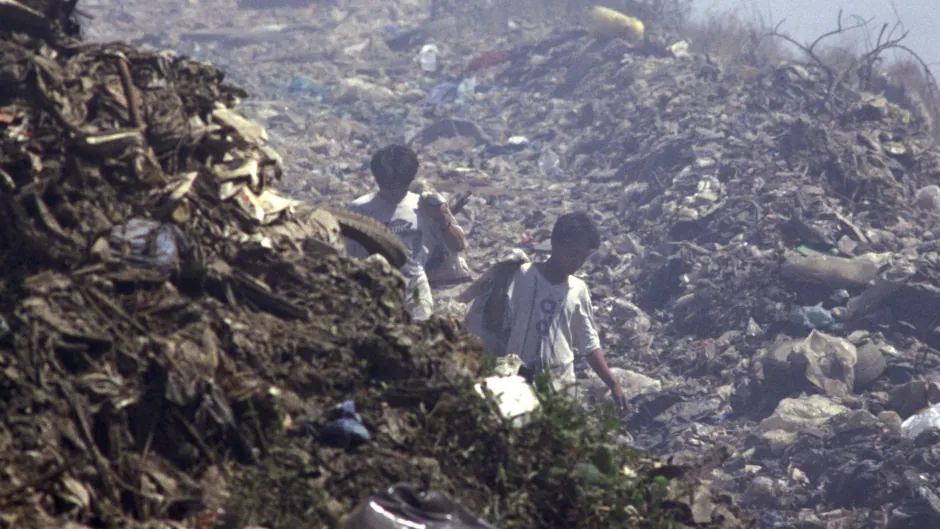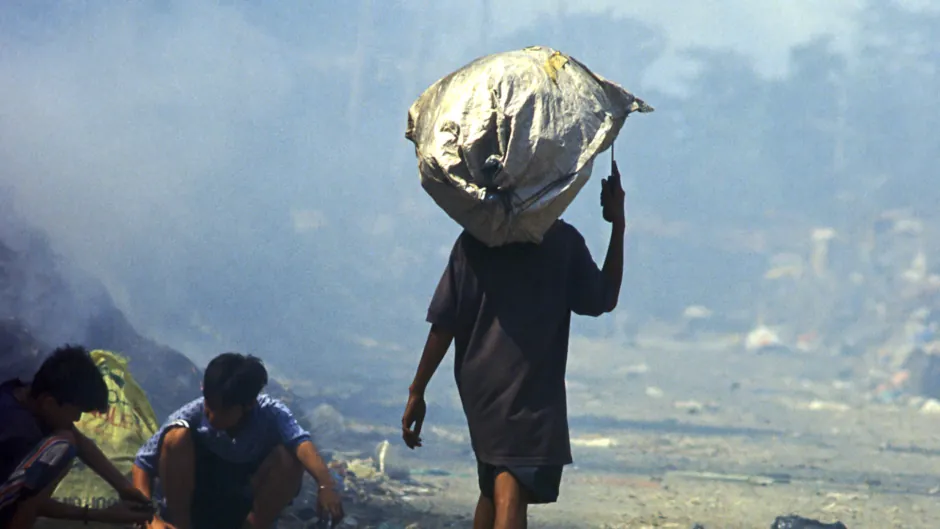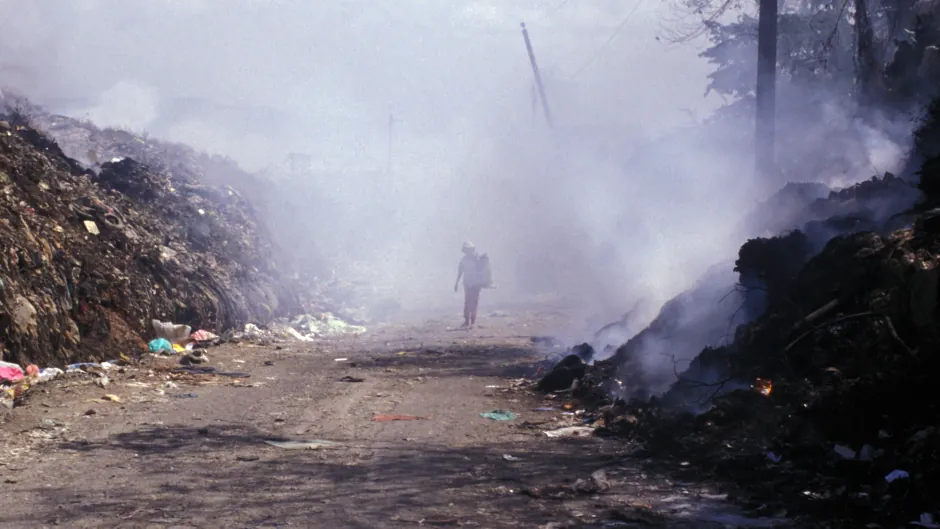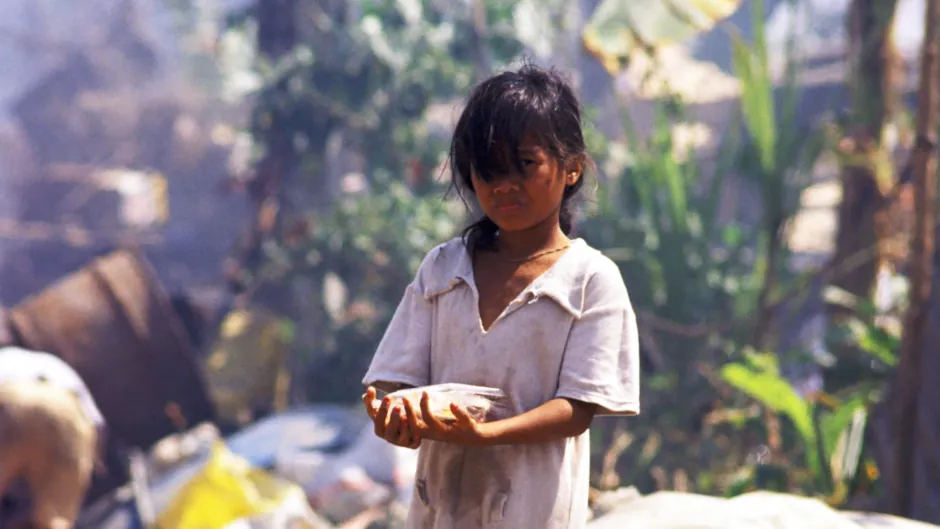Southeast Asia Travel Narrative Story: Living by Garbage in Manila in the Philippines
The capital of the Philippines, Manila, is home to some eleven million inhabitants. It understandably suffers from many of the same problems that afflict cities of its size all over the world — poverty, crime, grid-locked traffic, pollution etc. Of these, the pollution problem is made worse by an infrastructure lagging years behind western standards. In particular, the city's garbage has, for many years, been taken to the outlying suburb of Payatas, where it is dumped and openly incinerated.

Locals call it "Smoky Mountain" because the air is constantly thick with smoke from the incineration; the stench is so strong, it's bearable for just a few moments at a time to outsiders. (I was physically sick after taking these photos, for which I spent about two hours at the site.) Ironically, the official name for the area translates into English as "promised land."
Originally planned as a landfill site, the garbage eventually filled the pit created for it, and now rises over thirty metres in places. Smoky Mountain is home, workplace and playground to about eighty thousand (and rising) people. Other Filipinos call them ang mga taong nakatira sa tabi ng basura, which, in Tagalog, literally means people living next to garbage. They eek out a living by scavenging through the garbage and salvaging whatever can be sold as scrap or recyclable material. The average family earns about US$ 1 a day for this work — not enough to feed itself. There is even a local group — The Scavengers' Association — for the people who live here, part of the Philippines Homeless People's Federation. Even Charles Dickens and Victor Hugo couldn't portray poverty and destitution on this scale.

Successive Philippine governments have promised to put an end to these living conditions. Yet they all seem to have paid only lip service to the problem. None of their plans has come to fruition and the problem is worsening. Some have questioned whether any Philippine government will be serious about swapping these pollution behemoths for sustainable separation, re-use and recycling programs. Citing the highly lucrative garbage collection business in Manila, they point to political corruption as a major driving force behind keeping dumps like Payatas up and running. Aid in the form of even basic healthcare and social services for the residents comes mainly from non-governmental and religious mission organizations.

In February, 2000, members of Greenpeace visited the site and criticized its effect on the environment, suggesting that toxins may be making their way into Manila's drinking water. As you might expect, disease and infection are common and respiratory infections, tuberculosis, pneumonia and malnutrition, among others, contribute to an average life expectancy of about forty years. The infant mortality rate is about 33%.

The homes themselves shouldn't really be called homes — they are are dilapidated shacks in a shanty town. The work is so dangerous that on July 10, 2000, thousands of people were trapped when a huge landslide of garbage buried them in their shacks. The landslide brought down power lines which then contributed to an ensuing inferno. Over two hundred — many of them children — died as a result. Although this incident was the largest disaster recorded at the site, similar ones occur all the time. I was told that just two months before I took these pictures, twenty people were trapped when a garbage heap near which they were working collapsed under its own weight on top of them. All died. Even today the highly combustible methane gas that dissipates constantly from the refuse poses a daily threat to the people who live and work there.

This girl, Stephanie, said she was 8 years old. Born in Manila, her father was unable to find work there and eventually moved his family to the mountain. Severely malnourished and dressed in stained, tattered clothes, she still finds the resources and the will to wear nail varnish. I don't think I've seen human dignity in such pathetic circumstances before or since. Unlikely to attend high school, it's hard to imagine how she could possibly ever raise herself out of poverty.

Hardly a tourist attraction, you won't find Payatas in the guidebooks. You're also unlikely to find more smiles amidst such poverty anywhere in the world.
Photography copyright © 1999 -
2025,
Ray Waddington. All rights reserved.
Text copyright © 1999 -
2025,
The Peoples of the World Foundation. All rights reserved.
Waddington, R., (2004) Living by Garbage. The Peoples of the World Foundation. Retrieved December 20, 2025, from The Peoples of the World Foundation. <https://www.peoplesoftheworld.org/travelStory.jsp?travelStory= living%20by%20garbage>
If you enjoyed reading this travel story, please consider buying us a coffee to help us cover the cost of hosting our web site. Please click on the link or scan the QR code. Thanks!



